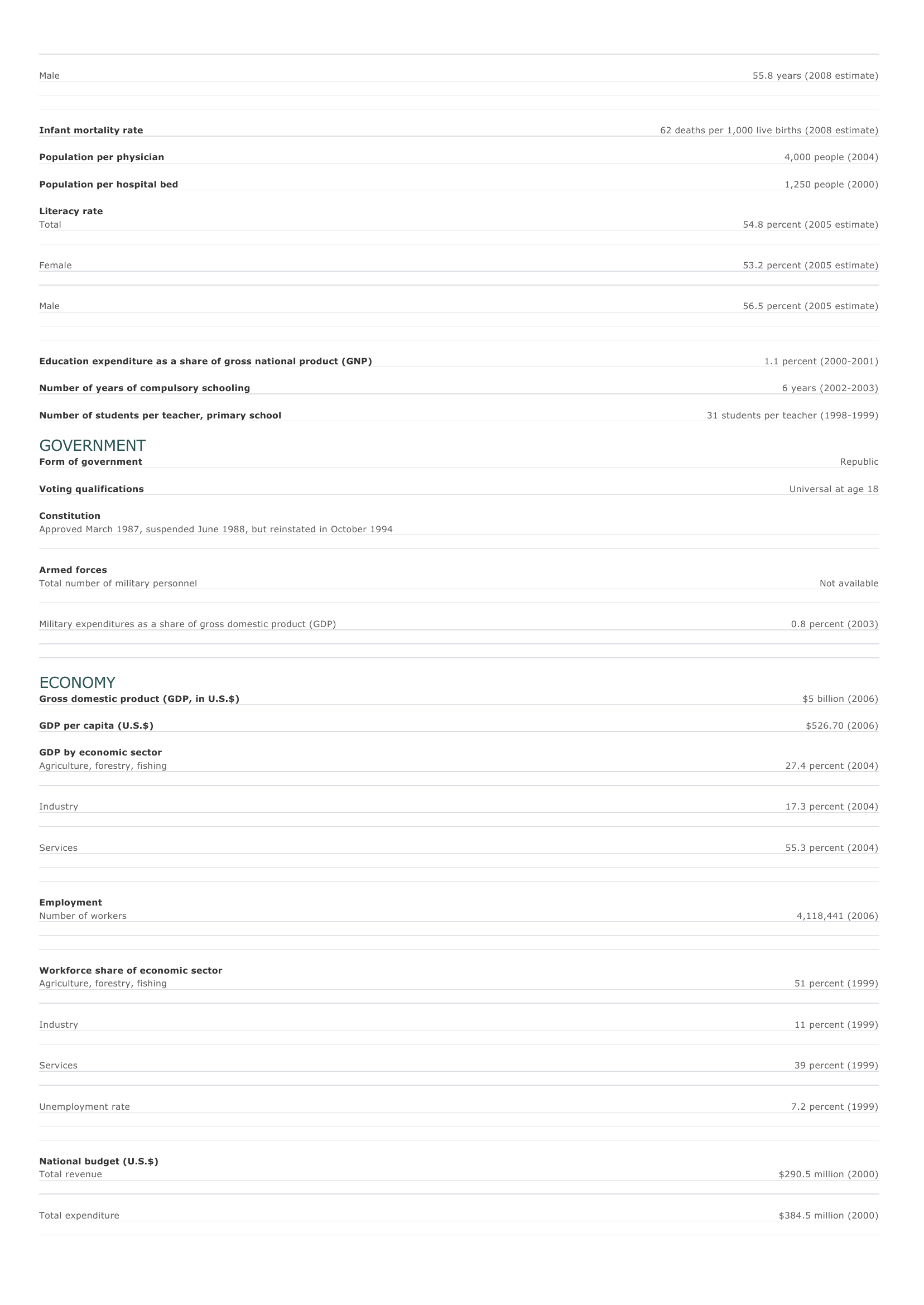Haiti Facts and Figures. BASIC FACTS Official name Republic of Haiti Capital Port-au-Prince Area 27,750 sq km 10,714 sq mi PEOPLE Population 8,924,553 (2008 estimate) Population growth Population growth rate 2.49 percent (2008 estimate) Projected population in 2025 13,254,108 (2025 estimate) Projected population in 2050 19,807,275 (2050 estimate) Population density 324 persons per sq km (2008 estimate) 839 persons per sq mi (2008 estimate) Urban/rural distribution Share urban 39 percent (2005 estimate) Share rural 61 percent (2005 estimate) Largest cities, with population Port-au-Prince Cap-Haïtien 1,961,000 (2003 estimate) 113,555 (1999 estimate) Gonaïves 63,291 (1995 estimate) Les Cayes 45,904 (1995 estimate) Ethnic groups Black African Mixed race and European 95 percent 5 percent Languages French (official), Creole (official) Religious affiliations* Roman Catholic 80 percent Protestant 17 percent Nonreligious 1 percent O ther 2 percent *Nearly one-half of the population also practices Vodun (also called Vodou or voodoo). HEALTH AND EDUCATION Life expectancy Total 57.6 years (2008 estimate) Female 59.4 years (2008 estimate) Male Infant mortality rate 55.8 years (2008 estimate) 62 deaths per 1,000 live births (2008 estimate) Population per physician 4,000 people (2004) Population per hospital bed 1,250 people (2000) Literacy rate Total 54.8 percent (2005 estimate) Female 53.2 percent (2005 estimate) Male 56.5 percent (2005 estimate) Education expenditure as a share of gross national product (GNP) Number of years of compulsory schooling Number of students per teacher, primary school 1.1 percent (2000-2001) 6 years (2002-2003) 31 students per teacher (1998-1999) GOVERNMENT Form of government Republic Voting qualifications Universal at age 18 Constitution Approved March 1987, suspended June 1988, but reinstated in October 1994 Armed forces Total number of military personnel Military expenditures as a share of gross domestic product (GDP) Not available 0.8 percent (2003) ECONOMY Gross domestic product (GDP, in U.S.$) GDP per capita (U.S.$) $5 billion (2006) $526.70 (2006) GDP by economic sector Agriculture, forestry, fishing 27.4 percent (2004) I ndustry 17.3 percent (2004) Services 55.3 percent (2004) Employment Number of workers 4,118,441 (2006) Workforce share of economic sector Agriculture, forestry, fishing 51 percent (1999) I ndustry 11 percent (1999) Services 39 percent (1999) Unemployment rate 7.2 percent (1999) National budget (U.S.$) Total revenue $290.5 million (2000) Total expenditure $384.5 million (2000) Monetary unit 1 gourde (G), consisting of 100 centimes Major trade partners for exports United States, Dominican Republic, Canada, Belgium, and France Major trade partners for imports United States, Netherlands Antilles, Dominican Republic, Colombia, and Trinidad and Tobago ENERGY, COMMUNICATIONS, AND TRANSPORTATION Electricity production Electricity from thermal sources 54.21 percent (2003 estimate) Electricity from hydroelectric sources 45.79 percent (2003 estimate) Electricity from nuclear sources 0 percent (2003 estimate) Electricity from geothermal, solar, and wind sources 0 percent (2003 estimate) Number of radios per 1,000 people 53 (1997) Number of telephones per 1,000 people 17 (2004) Number of televisions per 1,000 people 6.3 (2000 estimate) Number of Internet hosts per 10,000 people 0 (2000) Daily newspaper circulation per 1,000 people 3 (1996) Number of motor vehicles per 1,000 people Paved road as a share of total roads 7.2 (1997) 24 percent (1999) SOURCES Basic Facts and People sections Area data are from the statistical bureaus of individual countries. Population, population growth rate, and population projections are from the United States Census Bureau, International Programs Center, International Data Base (IDB) (www.census.gov). Urban and rural population data are from the Food and Agriculture Organization (FAO) of the United Nations (UN), FAOSTAT database (www.fao.org). Largest cities population data and political divisions data are from the statistical bureaus of individual countries. Ethnic divisions and religion data are largely from the latest Central Intelligence Agency (CIA) World Factbook and from various country censuses and reports. Language data are largely from the Ethnologue, Languages of the World, Summer Institute of Linguistics International (www.sil.org). Health and Education section Life expectancy and infant mortality data are from the United States Census Bureau, International Programs Center, International database (IDB) (www.census.gov). Population per physician and population per hospital bed data are from the World Health Organization (WHO) (www.who.int). Education data are from the United Nations Educational, Scientific and Cultural Organization (UNESCO) database (www.unesco.org). Government section Government, independence, legislature, constitution, highest court, and voting qualifications data are largely from various government Web sites, the latest Europa World Yearbook, and the latest Central Intelligence Agency (CIA) World Factbook. The armed forces data is from Military Balance. Economy section Gross domestic product (GDP), GDP per capita, GDP by economic sectors, employment, and national budget data are from the World Bank database (www.worldbank.org). Monetary unit, agriculture, mining, manufacturing, exports, imports, and major trade partner information is from the statistical bureaus of individual countries, latest Europa World Yearbook, and various United Nations and International Monetary Fund (IMF) publications. Energy, Communication, and Transportation section Electricity information is from the Energy Information Administration (EIA) database (www.eia.doe.gov). Radio, telephone, television, and newspaper information is from the United Nations Educational, Scientific and Cultural Organization (UNESCO) database (www.unesco.org). Internet hosts, motor vehicles, and road data are from the World Bank database (www.worldbank.org). Note Figures may not total 100 percent due to rounding. Microsoft ® Encarta ® 2009. © 1993-2008 Microsoft Corporation. All rights reserved.






